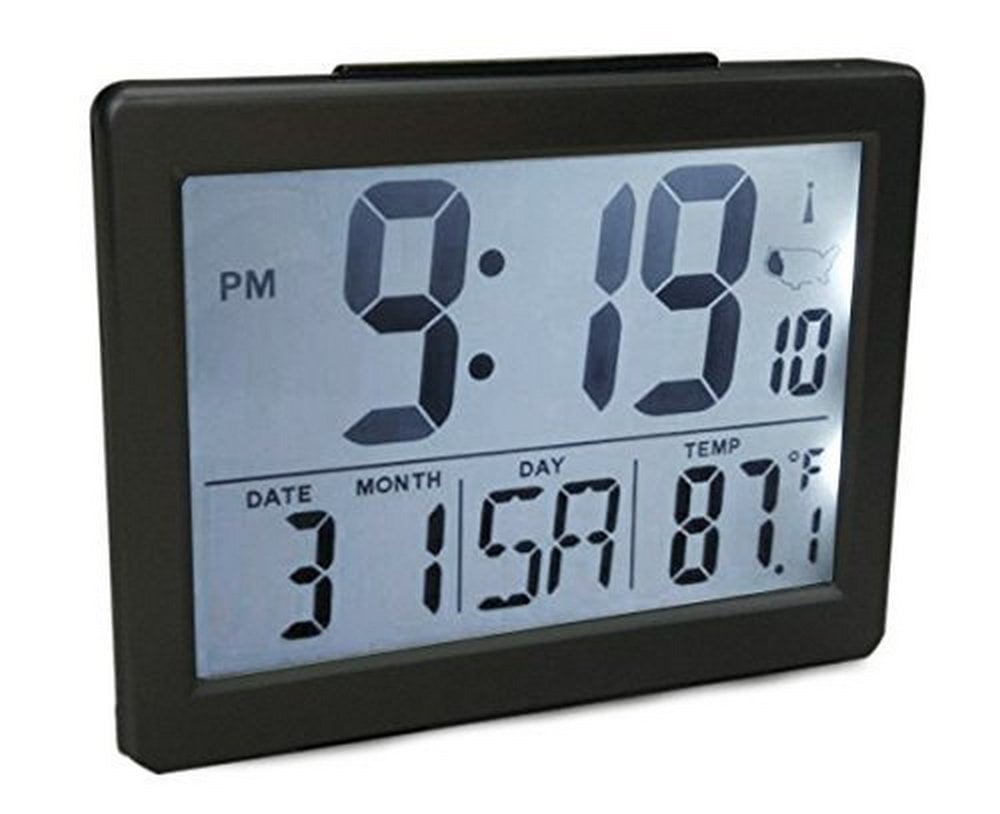
Stop wondering if you really know what time it is. Diameter measures 12" Uses 1 AA batter (not included) lasts up to two years. The wall clock also gives precise temperature and humidity readings. Watch those hands spin at 20 times their normal rate until the signal is picked up and the time is adjusted to accuracy with less than a one-second deviation in one million years! After that, several times each night, the clock readjusts itself based on the latest signal readings, to give you the world's most accurate time 24 hours a day. The moment you put in the battery, the Zeit Wall Clock sets itself by listening for the radio signals of the NIST Atomic Clock in For Collins, Colorado. Watch the hands on the Zeit wall clock spin as they read the radio signals from the world's most accurate timekeeper, the National Institute of Standard and Technology's atomic clock in Fort Collins, Colorado. This material may not be published, broadcast, rewritten or redistributed.Tell time by the atomic clock that governs ship movements, radio stations, space flights and war plans! Super-Intelligent Machines: 7 Robotic FuturesĬopyright 2014 LiveScience, a TechMediaNetwork company. Wacky Physics: The Coolest Little Particles in Nature Follow Live Science, Facebook & Google+. Your clock is off by: +0. Your Devices Clock (UTC-8) Today: 10:33:14 P.M. "So while we're celebrating this accomplishment, one of the burdens of being an atomic clock scientist is that you're aware that the competition is always ahead of you."įollow Denise Chow on Twitter. 24-Hour Clock Display Coordinated Universal Time (UTC) 06:33:14 UTC is always displayed as a 24-hour clock. This results in a clock system that can remain ultra-stable over decades. These clocks measure very stable and precise frequencies of light emitted by specific atoms, using them to regulate the time kept by more traditional mechanical, quartz crystal clocks. "Scientists at NIST are already working on the next generation of atomic clock that will be even better," O'Brian said. Since the 1950s, the gold standard for timekeeping has been ground-based atomic clocks. The NIST-F2, which has been under development for a decade, is the most precise cesium-based atomic clock yet developed by the NIST, but physicists are already setting more ambitious milestones. "Now, the NIST-F2 is the latest in a long chain of precision timekeeping." "We all rely on the exquisite precision of atomic clocks," O'Brian said.

Ultraprecise timekeeping is critical for maintaining many of the modern conveniences people have come to rely on, including electrical grids, global telecommunications and the interconnected networks of GPS systems. Thus, atomic clocks can make extremely precise measurements of a second, based on the cycles of the radiation that gets an atom of cesium to oscillate between two energy states.

When one of these atoms is blasted with microwaves, the electrons that orbit the nucleus "vibrate" between energy states. An atomic clock that could pave the way for autonomous deep space travel was successfully activated last week and is ready to begin its year-long tech demo, the mission team confirmed on Friday, Aug. Atomic clocks detect the natural 'ticking' or 'vibration' from energized atoms to keep precise time. Current atomic clocks use extremely cold cesium atoms. A new atomic clock, called NIST-F2, is the most precise timekeeper yet developed. Operating the NIST-F2 and NIST-F1 simultaneously, and comparing their measurements over long periods of time, will help researchers calibrate and improve the precision of both clocks.Ītomic clocks detect the natural "ticking" or "vibration" from energized atoms to keep precise time. "F2 is substantially more accurate than our current frequency standard," Jefferts said.


The NIST-F2's predecessor, the NIST-F1, has served as the official source of time in the United States since 1999, and will continue to be used alongside its newer sibling, said physicist Steven Jefferts, lead designer of the NIST-F2.


 0 kommentar(er)
0 kommentar(er)
